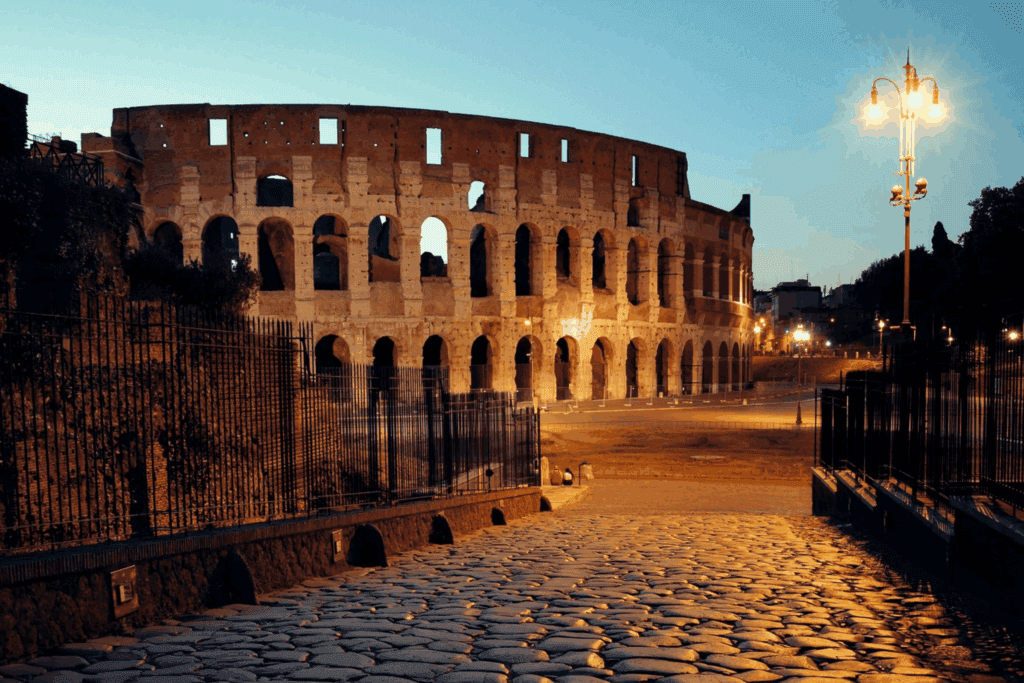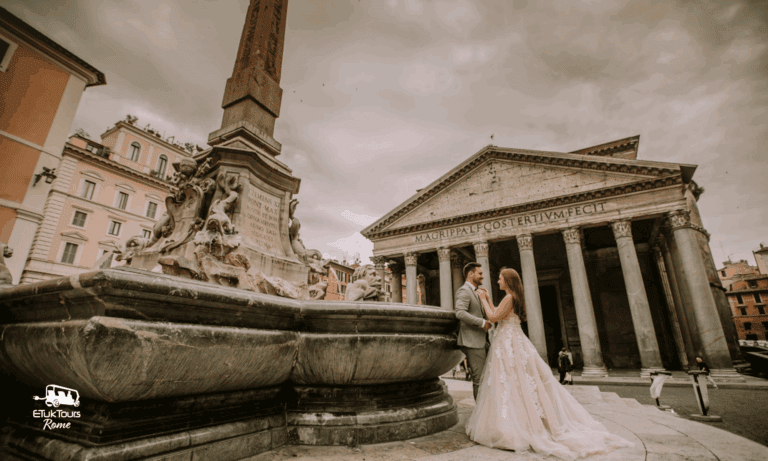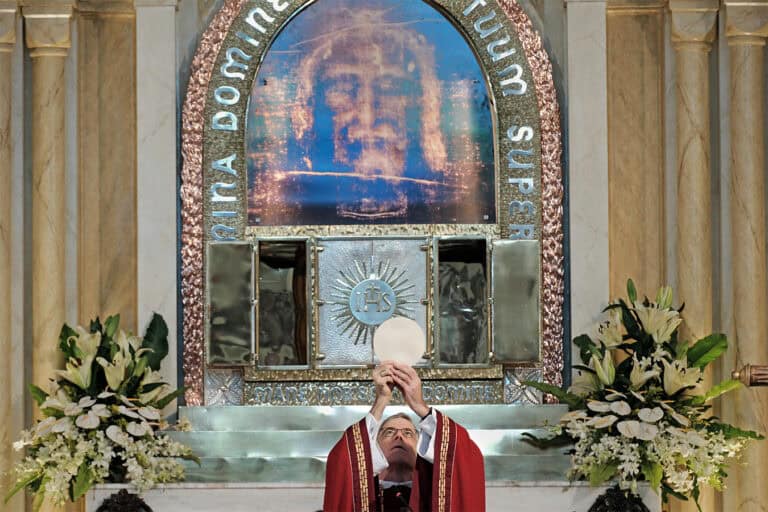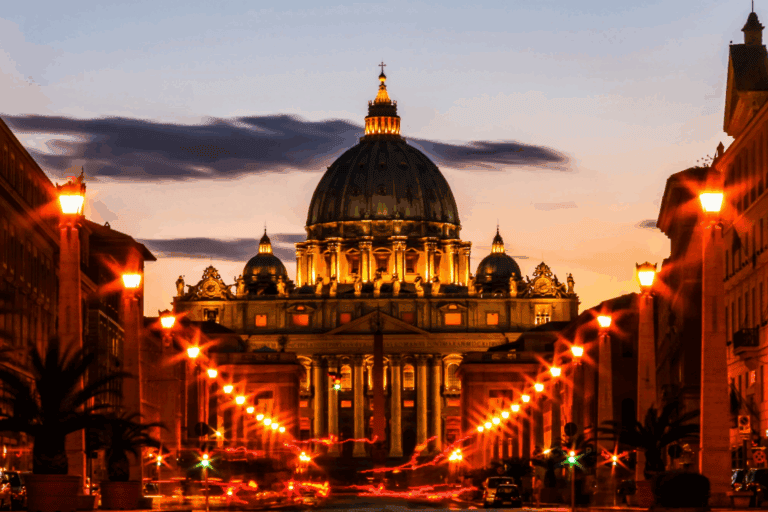When one thinks of Rome, images of sun-drenched piazzas, ancient gladiators, and Renaissance art typically come to mind. Yet, as October’s shadows lengthen, the Eternal City reveals a different, more spectral character. Halloween in Rome is not a tradition rooted in centuries of local custom, but a modern adoption that thrives amidst a backdrop of unparalleled ancient history. The city, built on layers of empire, faith, and intrigue, offers a Halloween experience that is utterly unique—a place where contemporary spooky fun collides with genuine historical haunts.

A Unique Halloween Blend: Ancient History Meets Modern Merriment
Rome’s Halloween is a fascinating fusion. One night, you might find yourself exploring a subterranean Christian burial site older than most nations, and the next, you could be dancing at a themed party in a trendy club. This blend is what makes the season so compelling. The city doesn’t need to manufacture its scares; the whispers of ghosts and the weight of history are embedded in its very foundations, from the Colosseum’s bloody past to the chilling artistry of its bone-decorated crypts. This guide embraces that duality, showcasing how to experience both the authentic, historical eeriness and the vibrant, modern festivities.
What to Expect from This Definitive Guide
This guide is your key to unlocking the spectral side of Rome. We will journey from the city’s ancient roots of remembrance to the most thrilling contemporary Halloween events. You will discover the most hauntingly beautiful sites, learn about guided ghost tours that bring dark legends to life, and find the best parties and family-friendly activities. Whether you are a history enthusiast drawn to the city’s catacombs or a thrill-seeker looking for a cinematic scare, prepare to explore the eerie, the exhilarating, and the unforgettable aspects of Halloween in Rome.
Understanding Halloween in Rome: A Blend of Ancient & Modern Traditions
To fully appreciate Halloween in Rome, it’s essential to understand its cultural context. The Americanized version of the holiday is a relatively recent phenomenon, but the period has long been associated with remembrance of the dead, creating a unique overlap of solemn tradition and modern revelry.
From Samhain Roots to Roman Observances: The Evolution of Spooky Season
While Halloween’s origins are often traced to the Celtic festival of Samhain, Ancient Rome had its own festivals honoring the dead, such as Lemuria and Parentalia, where rituals were performed to appease restless spirits. These ancient practices, focused on pacifying ancestral ghosts, show that a connection between this time of year and the supernatural has existed in this land for millennia. The modern celebration of Halloween taps into this deep historical undercurrent, giving it a resonance it might lack in other locales.
All Saints’ Day (Ognissanti) and All Souls’ Day (Giorno dei Morti): Rome’s Traditional Dates of Remembrance
The more traditional and culturally significant observances in Rome are November 1st, All Saints Day (Ognissanti), and November 2nd, All Souls’ Day (Giorno dei Morti). Ognissanti is a national holiday where Italians honor all saints. Giorno dei Morti is a more solemn day dedicated to visiting cemeteries, lighting candles, and remembering deceased loved ones. Many Romans use this time for quiet reflection, and you will see cemeteries beautifully adorned with flowers, a poignant counterpoint to the ghoulish decorations of Halloween.
The Growing Popularity of Modern Halloween Celebrations in Rome
Despite the deep-rooted nature of Ognissanti, the commercial and festive aspects of Halloween have gained significant traction in Rome over the past few decades. Driven by pop culture and embraced by younger generations, you’ll now find shops selling costumes, bars hosting themed nights, and even children partaking in trick-or-treating. This modern layer sits atop the city’s historic traditions, creating a period where macabre fun and heartfelt remembrance coexist.
Whispers of the Past: Rome’s Most Historically Haunting Sites
Rome’s history is so vast that its relationship with death is not hidden but is often on dramatic display. For an authentic Halloween thrill, skip the manufactured haunted houses and visit these genuine haunted sites where history and mortality are inextricably linked.
The Capuchin Crypt (Santa Maria Della Concezione Dei Cappuccini): A Macabre Masterpiece
Located beneath the church of Santa Maria Della Concezione Dei Cappuccini near Piazza Barberini, the Capuchin Crypt is one of the world’s most breathtakingly macabre attractions. It contains the skeletal remains of over 3,700 Capuchin friars. Rather than being interred, their bones have been meticulously arranged into ornate designs, creating chandeliers, alcoves, and artistic patterns. The crypt is divided into six small chapels, each a testament to life’s fleeting nature. A plaque ominously reminds visitors: “What you are now, we once were; what we are now, you will be.” It is an essential and unforgettable stop for anyone seeking the spooky side of Rome.
Roman Catacombs: Ancient Burials and Early Christian Mysteries
Stretching for miles beneath the Appian Way, the Catacombs of Rome are a network of ancient underground tunnels used as burial grounds by early Christians and other communities from the 2nd to the 5th centuries. Exploring these narrow, labyrinthine passages is a journey back in time. The cool, damp air and the endless rows of empty burial niches (loculi) create a profoundly eerie atmosphere. Guided tours are essential for navigation and to understand the history of the symbolic frescoes that adorn the walls, which tell the story of a faith practiced in secret.
The Museum of Purgatory (Museo delle Anime del Purgatorio): Relics from the Afterlife
Tucked away inside the Church of the Sacred Heart of Suffrage (Sacro Cuore del Suffragio) is a small, unsettling collection. The Museum of the Souls in Purgatory displays items—prayer books, wooden tables, and articles of clothing—that are said to bear the scorch marks of hands belonging to souls in purgatory. According to belief, these spirits appeared to the living, leaving behind physical proof of their existence while pleading for prayers to ascend to heaven. It’s a tiny but chilling museum that delves into a fascinating aspect of Catholic eschatology.
Santa Maria dell’Orazione e Morte: The Crypt of the Brotherhood
This unassuming church near Palazzo Farnese holds another of Rome’s bone-chilling secrets. Its name translates to “Saint Mary of Prayer and Death,” a fitting title for a church run by a brotherhood dedicated to burying the unclaimed bodies found in Rome. Its underground crypt, though less ornate than the Capuchin Crypt, is a stark and powerful display of human skulls and bones, a direct confrontation with mortality that perfectly suits the Halloween spirit.
The Doll Hospital (L’Ospedale delle Bambole): An Unsettling Collection
For a different kind of creepiness, venture to the “Doll Hospital” (L’Ospedale delle Bambole) on Via di Ripetta. This is not a Halloween attraction but a real restoration workshop that has been operating for decades. The storefront and interior are filled with dismembered doll parts—limbs, heads, and glassy eyes—creating an uncanny and unintentionally disturbing scene. It is a quirky and unsettling stop that captures a unique, almost cinematic sense of unease.
Rome After Dark: Guided Ghost Tours & Spooky Walks
When night falls, Rome’s ancient stones seem to tell different stories. Joining a guided Ghost Tour is one of the best ways to access the city’s darker folklore, exploring shadowy alleys and forgotten corners where legends of ghosts and spirits persist.
Immersive Ghost Tours: Unearthing Rome’s Dark Legends
Numerous companies offer specialized ghost tours that lead you through the cobblestone streets of areas like Trastevere and the historic center. Expert guides recount tales of betrayal, murder, and paranormal sightings, bringing the city’s haunted history to life. You’ll hear the story of Beatrice Cenci, executed for patricide and said to haunt Ponte Sant’Angelo, or learn about the restless spirit of Olimpia Maidalchini, who races across Piazza Navona in a ghostly carriage. A guided ghost tour transforms a simple walk into a spine-chilling narrative experience.
Self-Guided Spooky Strolls: Discovering Rome’s Atmospheric Corners
If you prefer to explore at your own pace, a self-guided walk can be just as rewarding. Start at Campo de’ Fiori, where philosopher Giordano Bruno was burned at the stake, his brooding statue now watching over the square. Wander towards Via Giulia and the aforementioned Santa Maria dell’Orazione e Morte. Cross the Ponte Sisto, where some claim to see the ghost of Donna Olimpia. The narrow, dimly lit alleys of Trastevere are particularly atmospheric at night, making it easy to imagine spirits from centuries past still lingering.
Vatican City’s Hidden Histories: Unveiling Darker Legends and Mysteries
While not a traditional “haunted” destination, the Vatican holds millennia of secrets. The sheer scale of history, power, and intrigue contained within its walls is staggering. Consider a tour that focuses on the darker aspects of papal history, the mysteries of the Vatican Museums, or the sprawling necropolis that lies beneath St. Peter’s Basilica. The experience is less about jump scares and more about a profound sense of awe and the weight of centuries, which can be just as chilling.
Festive Frights: Modern Roman Halloween Celebrations & Parties
For those seeking a more lively and celebratory Halloween, Rome delivers with a growing number of parties, events, and themed experiences. The city’s nightlife scene fully embraces the holiday, offering frights and fun for every taste.
Halloween Parties and Nightlife: Where to Celebrate
Many of Rome’s clubs and bars, particularly in the Testaccio, Ostiense, and historic center districts, host elaborate Halloween parties. Expect costume contests, themed cocktails, and DJs spinning late into the night. Check local event listings in the weeks leading up to October 31st for specific venues and themes. International pubs in areas like the one near the Colosseum or in Trastevere are also popular spots for Halloween gatherings, drawing a mix of locals, students, and tourists.
Themed Dining Experiences and Spooky Cocktails
Restaurants and bars across Rome get creative for Halloween. You might find “spooky menus” with dishes cleverly named after horror tropes or cocktails served in blood bags or bubbling beakers. These themed experiences offer a fun and delicious way to get into the Halloween spirit. From high-end cocktail bars to casual eateries, many establishments add a touch of macabre flair to their offerings for the last week of October.
Profondo Rosso: A Haven for Horror Film Enthusiasts
Fans of Italian horror films, particularly the works of Dario Argento, must visit the Profondo Rosso (Deep Red) store in the Prati district. Run by the director himself, this shop is a museum and store dedicated to his films and the horror genre. Filled with props, posters, and memorabilia, it’s a pilgrimage site for genre fans and a perfectly atmospheric place to visit during the Halloween season.
Halloween-Inspired Exhibitions or Cultural Events
Keep an eye out for special exhibitions or events at Rome’s museums and cultural centers. Occasionally, institutions will host late-night openings, film screenings, or talks that align with the spooky season. Even a visit to the Galleria Borghese can take on a Halloween feel when focusing on Caravaggio’s dramatic use of shadow or Bernini’s intense mythological sculptures. These events provide a more cultural way to engage with the themes of fear, death, and the supernatural that define Halloween.
Family Spooktaculars: Kid-Friendly Halloween Adventures
Halloween in Rome isn’t just for adults. The city and its surroundings offer several fantastic options for families looking to celebrate with younger children, blending amusement park thrills with festive, age-appropriate fun.
Cinecittà World: Amusement Park Thrills and Halloween Fun
Rome’s premier cinema and TV-themed amusement park, Cinecittà World, goes all out for Halloween. The park transforms with spooky decorations, horror-themed zones, and live shows featuring zombies, witches, and monsters. With haunted houses for older kids and teens and more lighthearted fare like pumpkin carving for little ones, Cinecittà World becomes a central hub for family-friendly Halloween entertainment throughout October. It’s a modern, high-energy way to celebrate the holiday.
Explora Children’s Museum: Engaging Halloween Activities for Young Ones
Explora, Rome’s dedicated children’s museum, often organizes Halloween-themed workshops and activities. These events are designed to be fun, educational, and creative, allowing kids to engage with the holiday’s themes in a non-scary way. Activities might include science experiments that seem like magic potions or craft sessions for making festive decorations. It is an excellent choice for families with toddlers and young children.
Luneur Amusement Park: Family-Friendly Fun with a Spooky Twist
Luneur Park, located in the EUR district, is another great option for families. As Italy’s oldest amusement park, it is geared towards younger children and typically decks itself out for Halloween. Expect friendly witches, smiling skeletons, and rides decorated with pumpkins and spiderwebs. The atmosphere is festive and fun rather than frightening, making it a perfect spot for a child’s first Halloween amusement park experience.
The Trick-or-Treat Tradition in Rome: What to Expect
While gaining popularity, trick-or-treating is not a widespread, door-to-door tradition in Rome as it is in the United States. You won’t see entire neighborhoods swarming with costumed children. However, some residential communities, particularly those with international residents, may organize small-scale events. More commonly, many shops and businesses will participate, offering candy to children who come in costume during the late afternoon on October 31st.
Beyond Halloween: Connecting Spooky Rome with Classic Sights
Perhaps the most unique aspect of a Roman Halloween is how the city’s iconic landmarks, steeped in a history far more dramatic than any horror film, provide a naturally eerie backdrop. Viewing these sites through a darker lens reveals the spirits of Ancient Rome.
Darker Perspectives on Iconic Landmarks
Visit the Colosseum and look past its architectural grandeur. Instead, imagine it as a stage for mass slaughter, where the sand was soaked with the blood of thousands. At the Circus Maximus, picture the thunder of chariots and the roar of a crowd baying for violent spectacle. Stand in the Roman Forum at dusk, the heart of the Roman Empire, and contemplate the countless conspiracies and betrayals that unfolded among its now-serene ruins. Walk upon Palatine Hill, where emperors lived and died, often violently, and feel the immense weight of that history. The sheer drama of Ancient Rome’s past makes its most famous sites inherently haunting, their stones echoing with the real-life spirits of history.
Wrapping up
Halloween in Rome offers an experience that is as layered and complex as the city itself. It is a unique opportunity to journey through millennia of history, from the spectral whispers of the Roman Forum to the chilling bone chapels of the Capuchin friars. You can delve into authentic historical sites that confront mortality head-on, then pivot to the pure, modern fun of a theme park or a costumed party in Trastevere.
The true magic of a Roman Halloween lies in this blend. The city doesn’t need to invent its ghosts; they are already there, embedded in the foundations of the Colosseum and wandering the ancient catacombs. By embracing both the solemn traditions of remembrance and the festive modern celebrations, you can craft an unforgettable autumn adventure. So, book that Golf cart tour, descend into the catacombs, and prepare to meet the eternal, spectral side of Rome.








